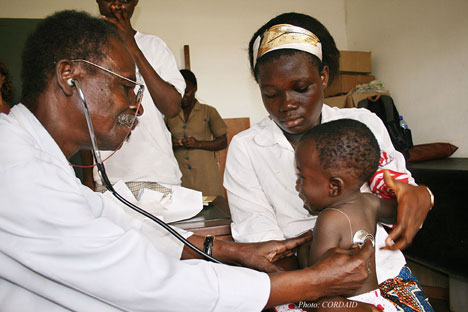Analysing the health sector’s portion of the national budget at least for the past five years will show the inadequacy of the Government of Ghana’s (GoG) tax sources into the national budget for the sector, prompting the need for alternative sources.
There are additional sources such as Internally Generated Funds (IGF) to the longstanding donor support line and the Annual Budget Funding Amount (ABFA) in 2011
The ABFA is mainly revenues from the country’s petroleum revenues. These were meant to support existing government tax funding to the different expenditure lines of the health budget.
However, what we find currently is the government spending almost all the tax revenues it allocates to the health sector on wages and salaries, leaving little for capital expenditure, goods and services, gradually shifting significant responsibility for capital expenditure to the ABFA and donor support lines.
That has implications for ordinary Ghanaians and their hope for a resilient primary health care system.
ABFA, health sector capital expenditure
Allocations from the ABFA for 2019, 2020 and 2021 to the health sector went solely to capital expenditure.
In contrast, in these same years, apart from 2021, there were no allocations for capital expenditure from the GoG for 2019 and 2020.
Even so, the said GoG allocation to capital expenditure in 2021 could have been significant, but was only 0.25 per cent of the total allocations from the GoG to wages and salaries in that year.
High reliance on ABFA
Besides the inadequate allocation from the GoG to health sector capital expenditure, allocation from the ABFA is also not adequate compared to allocations from the ABFA to similar priorities such as education.
In context, about GH¢2,768,030,000 was utilised for four ABFA priority areas in 2020. Out of this amount, 25 per cent was reported in the 2021 national budget as spent on education and health service delivery, about 70 per cent on roads, rail, and other critical infrastructure, three per cent on agriculture and one per cent on industrial development.
The merger of health and education makes it difficult to unravel how much specifically went to the two sectors separately; however, it is well known that the Free SHS programme utilises a chunk of the funds.
For instance, GH¢763,180,024 of ABFA funds was allocated to goods and services for education and GH¢13,000,000 for capital expenditure in 2021, making a total of GH¢776,180,024 from ABFA to education.
Meanwhile, the total allocation from ABFA to health in the same year was GH¢32,425,000. This is unfair to the health sector and needs to be corrected as soon as possible given the limited health infrastructure available in districts and communities and current and emerging public health risks.
Anomaly
On the ABFA priorities, the PIAC noted in a public statement that “once recognised and selected, priority areas should receive fairly equal amounts of funding. This, however, does not happen to be the case.â€
They raised issues with the allocations to the health sector. “For instance, from 2017 to date, Physical Infrastructure and Service Delivery in Health has been the most poorly resourced priority area as compared to the others. Only 2.61 per cent was disbursed to the health priority area in 2017, 2.7 per cent in 2018, and 3.65 per cent in 2019.â€
Implications
The implication of this trend means the universal health coverage will be significantly delayed. Increased and protected funding is needed to provide the facilities and personnel to ensure the healthcare needs of everyone.
The Annual Progress Report on the implementation of the Medium-Term National Development Plan in the health sector shows a lot more needs to be done by the government to improve the health security of residents of Ghana.
The number of functional Community-based Health Planning and Services (CHPS) zones expected in 2019 missed the national target by about 468 CHPS compounds.
Doctor-to-population ratio remains a challenge in the country despite improving from 1:7,196 in 2018 to 1:6,897 in 2019.
Compared to the World Health Organisation (WHO) standard of 1:1320, it is one of the troubling issues that needs to be addressed.
Persistence of the financial non-commitment means the ideal health targets necessary for UHC will keep eluding the country.
Policy pronouncements
As shown above, the current ratio of 1:24 in the distribution of ABFA allocations between health and education could be corrected.
Any social policy that ensures equity such as the FSHS or accessible quality Primary Health Care are worth supporting, as such there is no need to quibble over what is rightly allocated to the FSHS, but rather, the call for similar investments to improve district and communities’ health facilities and services (primary health care) is in order.
If it is impossible to increase the ABFA share to health due to a potential adverse effect on the FSHS policy, then the government should consider ring-fencing the COVID-19 Health Levy for goods and services and capital expenditure in the health sector.
The writer is a Policy and Advocacy Coordinator with the Alliance for Reproductive Health Rights (ARHR).
Â





